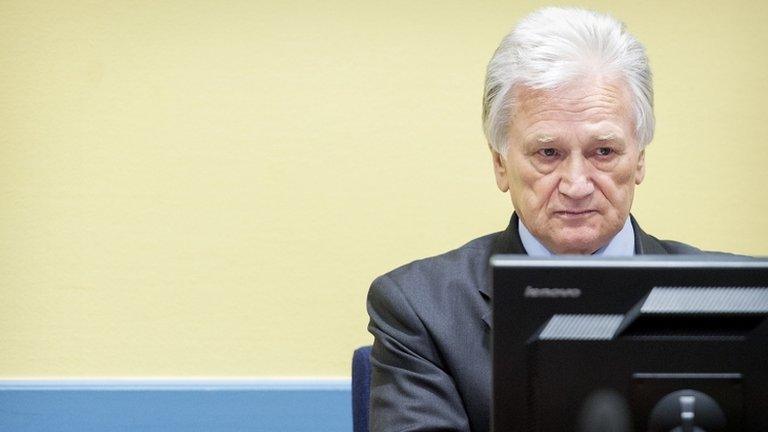Srebrenica: Dutch state partly responsible for 350 deaths
- Published

Munira Subasic, of the Mothers of Srebrenica group, said the ruling was a "great injustice"
A Dutch appeals court has largely upheld a 2014 ruling finding the Netherlands responsible for the deaths of 350 Bosniak (Bosnian Muslim) men in the Srebrenica massacre.
The Dutch state acted unlawfully in July 1995 as peacekeepers handed the men over knowing the dangers they faced, Judge Gepke Dulek said.
But she ruled it was not 100% liable as many would have been killed regardless.
A campaign group for the families has called the ruling "a great injustice".
Munira Subasic, of the Mothers of Srebrenica group, said: "The Dutch state should take its responsibility for our victims because they could have kept them all safe on the Dutchbat compound."
The July 1995 massacre of more than 7,000 Muslim men and boys was considered Europe's worst since World War Two and the case against the Netherlands was brought by 6,000 relatives of those who died.
Some 5,000 Bosniaks had sought shelter from Bosnian Serb soldiers in a UN base, which was being defended by the lightly-armed Dutch peacekeepers - known as Dutchbat. Thousands more had sought protection outside the base.
But after the base was overrun, the Muslim men and boys were told by the peacekeepers they would be safe and handed over to the Bosnian Serb army.
In 2014, a Dutch court found the Netherlands liable for the deaths of 350 who had been inside the base, but not those outside.
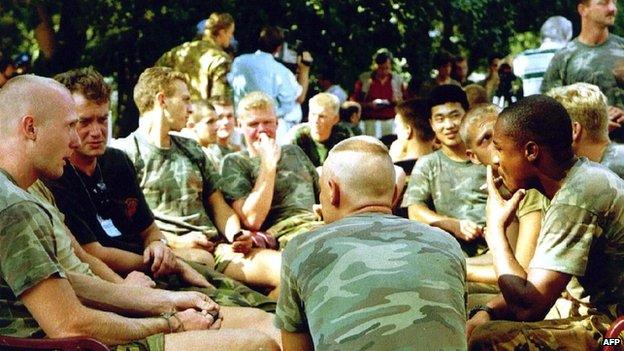
A battalion of Dutch peacekeepers was stationed at Srebrenica in 1995
Three years later, Judge Dulek - sitting at the Hague Appeals Court - backed the decision.
In an hour-long ruling (in Dutch), external, she concluded that "Dutchbat knew that the men ran a real risk of inhumane treatment or execution".
The judge added that the Dutchbat soldiers had facilitated the separation of the men and the boys among the refugees.
But she said the Netherlands should only be responsible for 30% of damages, as there was a 70% likelihood the male refugees would have been dragged from the safety of the base whatever the peacekeepers had done.
The Dutch government has previously acknowledged its failure to protect the refugees, while the Bosnian Serbs were responsible for the killings.
Separately, some 200 veterans of the Dutch battalion have launched a lawsuit against the Dutch government, claiming around €4.5m ($5m/£3.9m) in compensation for the trauma they suffered.
The precise number of Bosniaks murdered at Srebrenica may never be known. The International Committee of the Red Cross said up to 8,000 had died, while the UN tribunal at The Hague said it was more than 7,000.

Timeline of Srebrenica siege
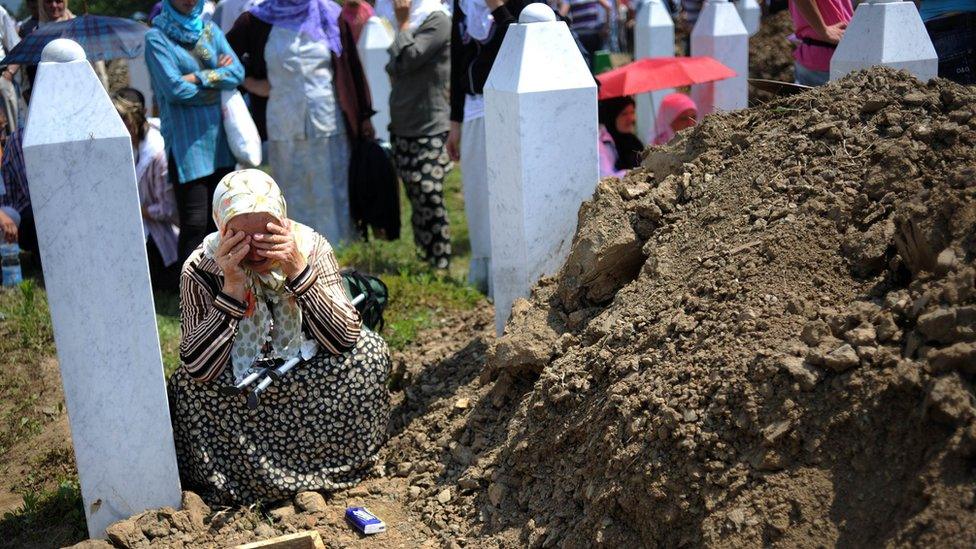
A woman sobs during a mass burial of newly identified victims, 15 years after the 1995 massacre,
6-8 July 1995: Bosnian Serb forces start shelling Srebrenica enclave
9 July: Bosnian Serbs step up shelling; thousands of Bosnian Muslim refugees flee to Srebrenica
10 July: Dutch peacekeepers request UN air support after Bosnian Serbs shell Dutch positions. Large crowds of refugees gather around Dutch positions
11 July: More than 20,000 refugees flee to main Dutch base at Potocari. Serbs threaten to kill Dutch hostages and shell refugees after Dutch F-16 fighters bomb Serb positions. Bosnian Serb commander Ratko Mladic enters Srebrenica and delivers ultimatum that Muslims must hand over weapons
12 July: An estimated 23,000 women and children are deported to Muslim territory; men aged 12-77 taken "for interrogation" and held in trucks and warehouses
13 July: First killings of unarmed Muslims take place near village of Kravica. Peacekeepers hand over some 5,000 Muslims sheltering at Dutch base in exchange for the release of 14 Dutch peacekeepers held by Bosnian Serbs
14 July: Reports of massacres start to emerge
- Published18 March 2017
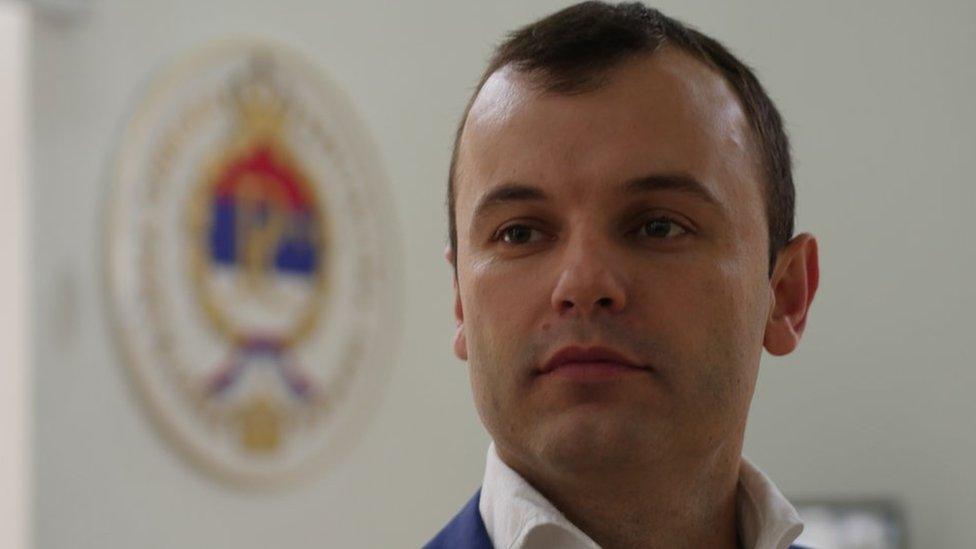
- Published24 March 2016
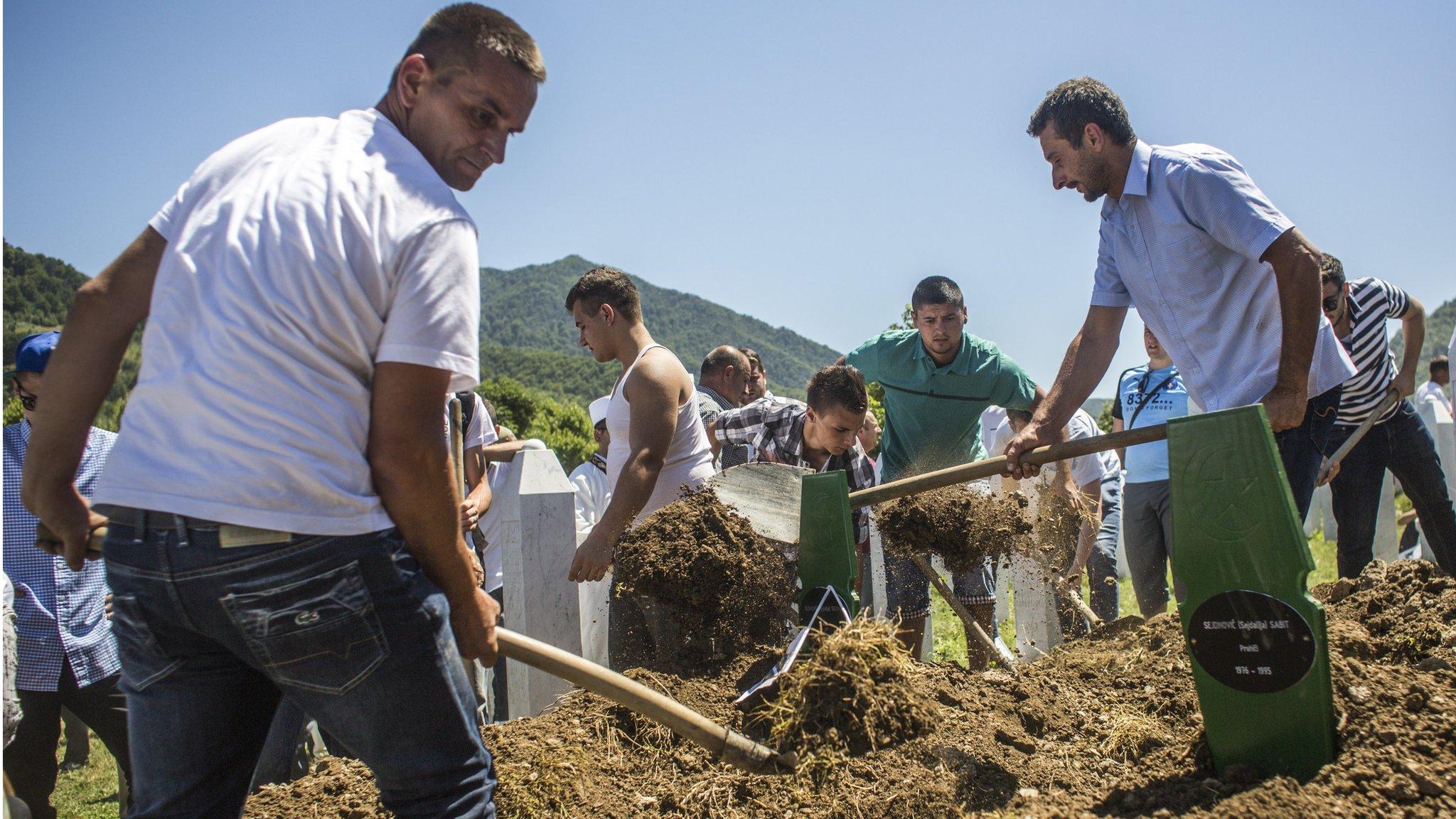
- Published15 March 2017

- Published16 July 2014
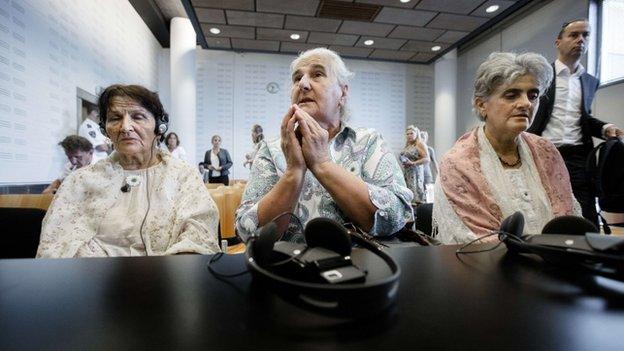
- Published16 July 2014
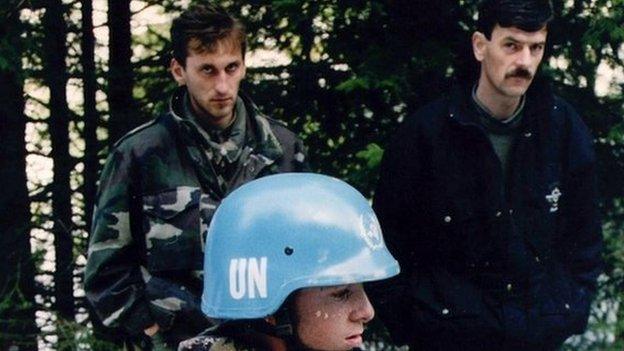
- Published16 July 2014

- Published16 July 2014
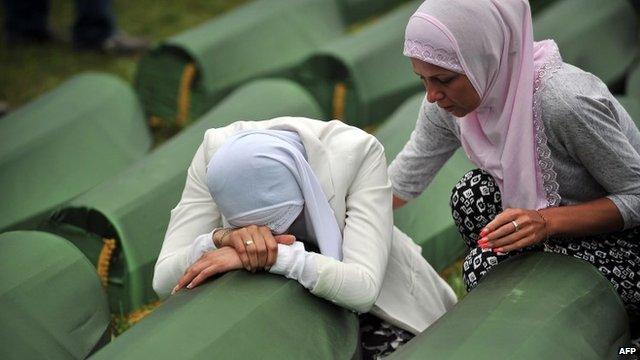
- Published9 July 2012
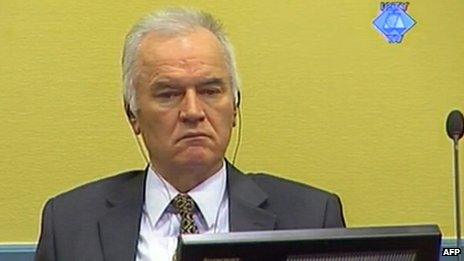
- Published28 February 2013
